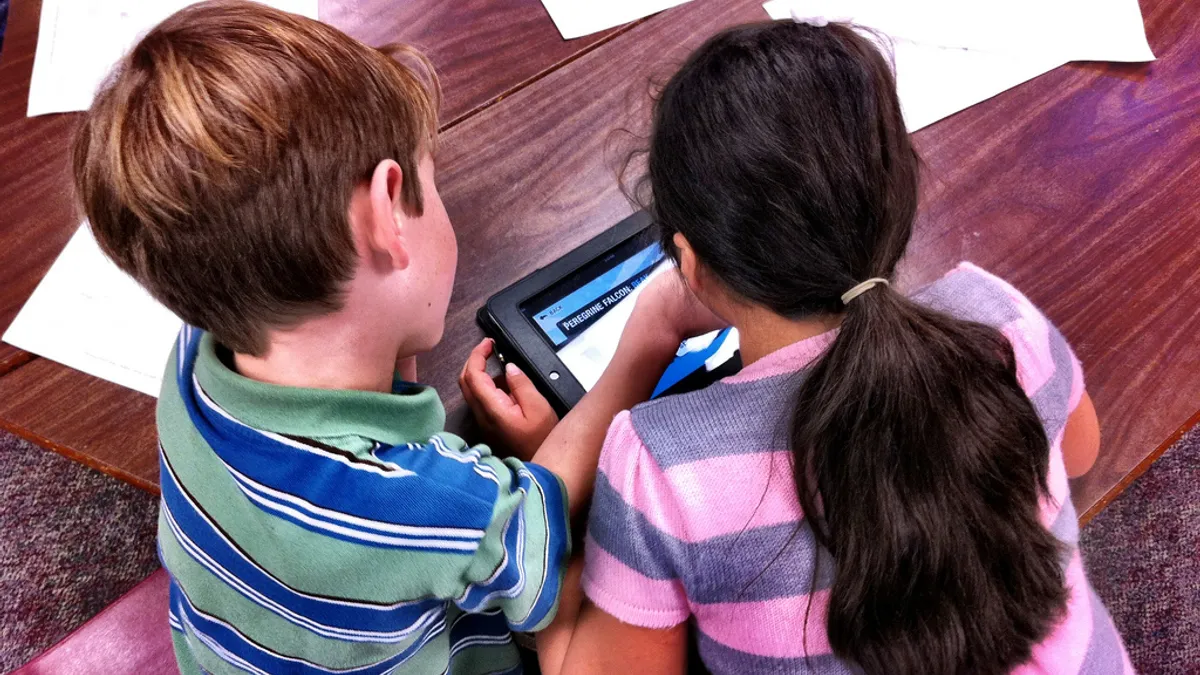Robert Avossa is the former superintendent of Palm Beach County Schools in Florida, the nation’s 10th largest K-12 district.
I often ask people to tell me about the best teacher they ever had. Invariably, they describe educators who simultaneously challenged and encouraged them, who made them feel both valued and empowered, and who ultimately transformed them into lifelong learners.
That’s true whether they’re remembering the 1st grade teacher who taught them to read or the 12th grade English teacher who made it cool to love “Hamlet.” Though our children may grumble about their school work, they desperately want to learn, and that’s so much easier when teachers take a personal interest in their lives — using their unique passions to motivate learning.
Students understand intuitively what qualities great teachers share, and the ability to form strong relationships is at the top of the list.
Researchers are learning more and more about the role the student-teacher relationship plays in academic achievement, engagement and social-emotional development. Strong connections, studies show, can lead to decreased absenteeism, lower dropout rates and fewer disciplinary actions. And the benefits extend long after children leave school.
A 2020 study by the American Psychological Association also found high schoolers who report positive relationships with their teachers grow into healthier adults. These studies quantify what our kids are telling us around the dinner table: Relationships with teachers matter.
The challenges of the last two years, however, have exacerbated an ever-present struggle we face as educators: It’s hard, not to mention time-consuming, to forge those strong bonds with students. That’s especially true in communities that have experienced extended periods of remote instruction because of the pandemic.
Imagine a 4th-grader who switched schools at the beginning of the 2020-21 school year, and whose only interactions with her teacher and brand-new classmates for the first three months were through a Zoom screen. Imagine her difficulty engaging with course materials, her struggle to bond with peers, her feelings of isolation. That situation would challenge even the teachers most adept at relationship-building — and during much less complicated times.
But the past two years of remote instruction have also begun to show us something else — something positive. The right education technologies can become vehicles for helping teachers form deeper connections with their students.
That may seem counterintuitive, given how many of us associate ed tech tools with the difficult, frustrating periods where we couldn’t look our students in the eyes and watch them make all the right connections. But these new resources, when deployed strategically and skillfully, are powerful vehicles for two of the key ingredients in relationship-building: giving students agency and returning to teachers their most valuable resource — time.
What do these sorts of tools look like in practice? Often, it’s simpler than it might sound.
Consider the growing number of tools that offer automatic grading functions for multiple choice and fill-in-the-blank quizzes. Though those formative assessments may provide important insights into students’ understanding of the material, grading them is tedious, time-consuming work for teachers. Freeing them of that responsibility gives them more opportunities to focus on their core relationships with students.
Likewise, ed tech that promotes collaboration and robust classroom discussion can also create an atmosphere where students develop agency over their own learning — and, in turn, creates a context for strengthening relationships.
Teachers like Paul Wojcik, a math teacher at Crooms Academy in Sanford, Florida, are now using a discussion platform that flips the classroom by giving students real-time feedback, motivating them to dig deeper into the materials and encouraging more substantive engagement with both teachers and peers.
As Paul told me, “When given the opportunity in class as a learning community, their curiosity grew. Many students were willing to not only ask questions of other students — they also respectfully critiqued other students' claims and accepted critiques in return.”
These technologies aren’t unlocking any deep secrets about human relationships. Instead, they are tackling the challenge of relationship-building from two angles: They’re creating a context for students to engage more deeply in their learning while also giving teachers more time to focus on the connections they otherwise might not have time to make. They also can play a role in helping students relate to one another, a skill employers are increasingly saying will be vital in an evolving workforce.
Despite all the challenges they’re facing right now, teachers are aching to strengthen relationships with our kids. These emerging technologies can help more educators become the best teachers someone has ever had, and we owe it to both of them — students and teachers — to provide the tools that will make that happen.


















